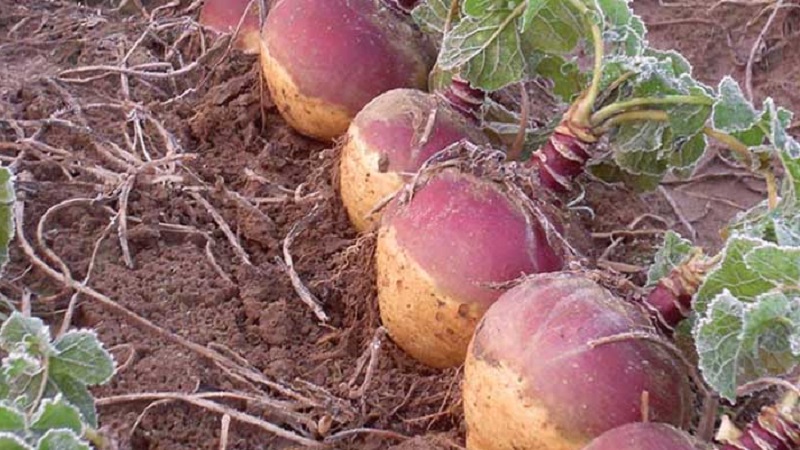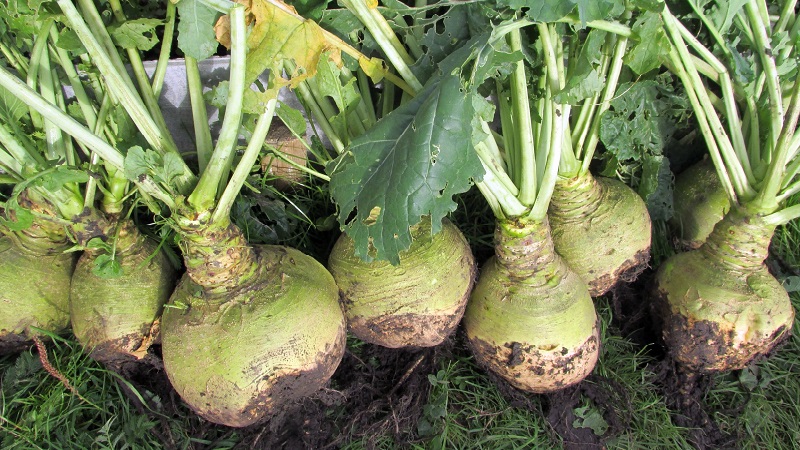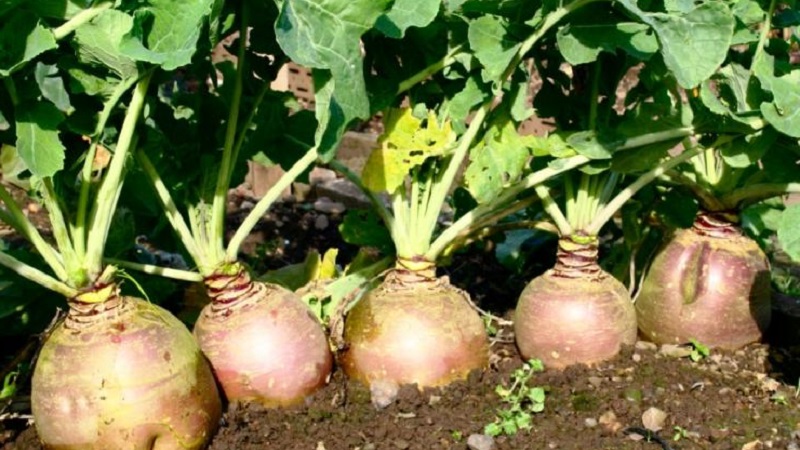How and when to harvest rutabagas to preserve the harvest until spring
Rutabaga belongs to the undeservedly forgotten agricultural crops along with turnips and spelled. Although it is the leader in vitamin C content among root crops. The vegetable is rich in potassium, calcium, phosphorus, magnesium, iron, vitamins B1, B2, R.
Rutabaga was very popular in Russia until the mid-18th century, but with the advent of potatoes, its cultivation declined sharply. Now the cultivation of a healthy vegetable is gaining momentum again among those who monitor their diet and seek to diversify their diet. However, it is not enough to grow a root crop, you still need to harvest and save on time. In the article we will tell you when to remove rutabagas from the garden and how to store them until spring.
The content of the article
Terms of harvesting swede
Healthy and tasty vegetable can be eaten 1.5-2 months after germination. Root crops intended for long-term storage are removed from the garden only after the onset of ripeness.

When is it time to harvest
Mass harvesting begins in 3-4 months after emergence. The best time for digging is September and early October. By this time, the swede stops growing and fully ripens. The crop is harvested before the onset of frost: frozen fruits quickly lose their taste and are poorly stored.
Factors affecting the ripeness of the swede
Rutabaga is a fairly cold-resistant root crop... It continues to grow and accumulates useful substances until the onset of cold weather. Late varieties of vegetables are sweeter and tastier than earlier varieties. The latter are dug up in August.
The timing of harvest is influenced by factors such as:
- ripening period of a particular variety (early ripening varieties are dug up earlier than late ones);
- the size of the roots (large vegetables are removed from the garden earlier, small ones are left longer, if weather conditions permit).
Interesting about swede:
Determination of the degree of maturity
A good helper in determining the degree of ripeness of a vegetable serve as recommendations of the manufacturer of the variety. On the package with seeds, the dates of emergence and ripening of root crops are indicated. The first thing to pay attention to is the variety and planting time. Based on these data, it is easy to calculate the ripening period of the vegetable.

The growing season of swede is 90 to 130 days... The sprouts that appear develop slowly at first. The first pair of true leaves grows about a week after germination. After 1–1.5 months, the formation of the root crop begins. By the end of the growing season, about a third of the tops turns yellow and dries up. Fruit weight at this time ranges from 400 g to 1 kg, depending on the variety.
However, weather conditions vary from year to year, and the harvest time will vary accordingly.
To correctly determine when to dig a rutabagawatching the root crop itself. Harvesting begins when build-ups occur. The appearance of crusts indicates that the vegetable is ripe. If in doubt, dig up a few fruits and taste.
The following external signs will tell you that the rutabaga is ready for harvest. harvest and storage for the winter:
- yellowing and drying of the lower leaves of the plant;
- the size and weight of root crops correspond to the declared indicators of the seed manufacturer.
Nevertheless, if there is a threat of frost, the vegetables are dug out earlier... Otherwise, the parts of the culture protruding from the ground will freeze.
Read also:
Harvesting the swede
Rutabaga is removed from the garden for storage in dry sunny weather... If, when determining the timing of harvesting, you are guided by the lunar calendar, remember that all root crops are harvested on days of the waning moon.

Digging technology for long-term storage
To keep the harvested vegetables until spring, when harvesting, adhere to the following recommendations:
- Root crops begin to be dug out on time, as they reach technical ripeness. Overexposed in the garden, they become tough and lose their taste.
- Rutabagas are pulled out of the ground by hand or with a shovel and pitchfork. Tools are used with care so as not to damage the skin of the fruit.
- Vegetables extracted from the ground are cleaned from the ground with their hands, without hitting each other or on a hard surface. The tops are twisted or cut off, leaving a tail of 1.5–2 cm. It is preferable to twist the leaves: this way the tops break off at the desired height and the apical bud remains intact.
- Vegetables are placed in a dark, well-ventilated place for a couple of days. It is undesirable to dry root crops in the sun, as they will lose moisture and will be worse stored.
- The rutabagas are sorted. Small, damaged fruits and those with many lateral roots are eaten immediately or used for animal feed.
Important!Rutabagas intended for long-term storage should not be washed. This leads to spoilage and decay of root crops.
Storage preparation
Cleaned from dirt, dried and sorted rutabaga is ready for laying for winter storage. The cellar or basement where the root crops will be located must also be prepared. The store is cleaned, disinfected and ventilated every time before storing vegetables.
First of all, they put things in order in the basement or cellar... Last year's crops, debris, sand remnants are removed. The boards from which the bins are made are pulled out, washed with soap and soda and dried thoroughly. For disinfection, the room and the container in which the vegetables will be located are treated 2-3 times with a 3-5% solution of copper sulfate.
Stored root crops are susceptible to various diseases (rot, phomosis, bacteriosis). The following measures help to prevent their appearance and development during storage:
- sowing varieties resistant to disease development;
- accurate harvesting and transportation;
- sorting damaged fruits;
- maintaining the correct temperature regime;
- disinfection of storage facilities, containers and equipment.
Important! Rutabaga is delivered to the storage site in a clean, dry container.

Choosing a place and method of storage
Properly prepared root vegetables laid for the winter in an unheated storage... Rutabaga is laid out in boxes or cardboard boxes and sprinkled with sand. The optimum temperature is from 0 to +2 ° С (lowering to -0.5 ... -1 ° С is allowed). Air humidity is maintained within 90–95%. The vegetable also keeps well in regular plastic bags.
If there is no suitable basement or cellar, rutabagas can be left in the ground in the garden. To do this, shallow holes or trenches are dug and vegetables are laid in them, covering with dry sawdust or straw. From above, the pits are covered with a layer of earth.
Conclusion
Rutabaga is a nutritious and healthy vegetable, rich in vitamin C and a number of macronutrients, characterized by long shelf life. Timely harvesting before frost and proper preparation for storage allow you to keep the taste and valuable substances in root crops until spring.